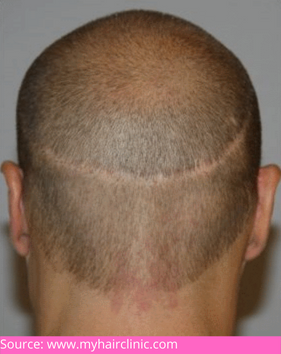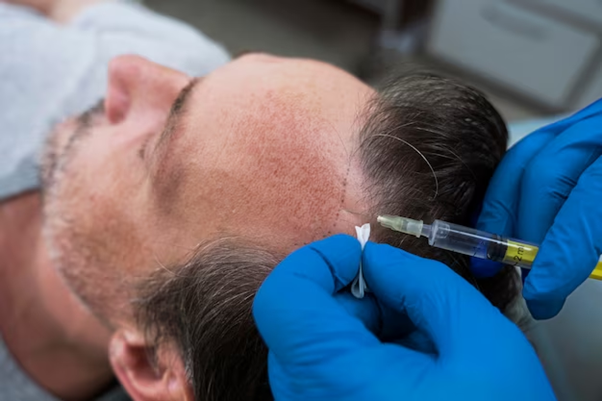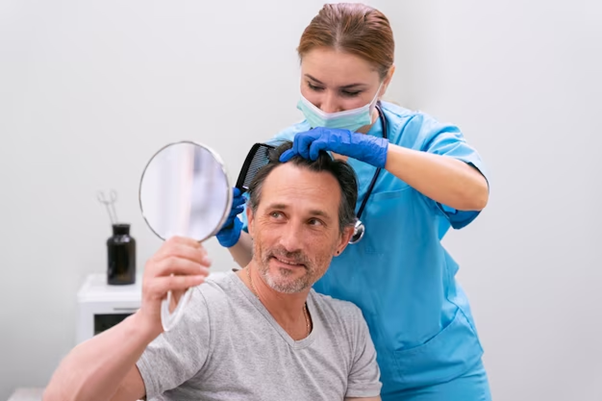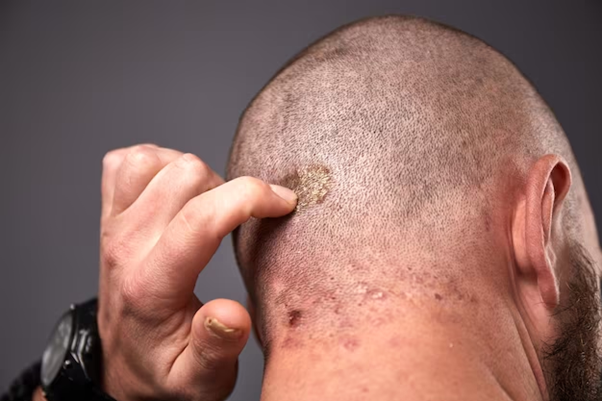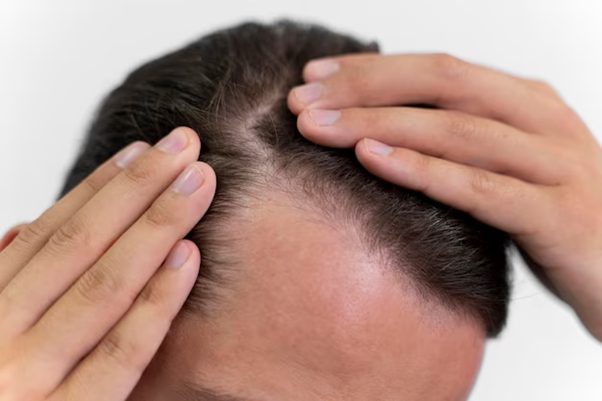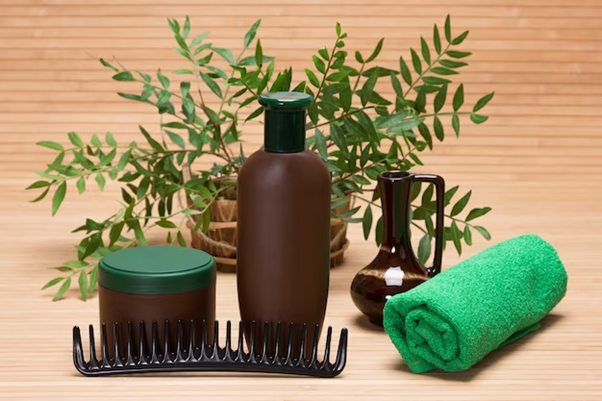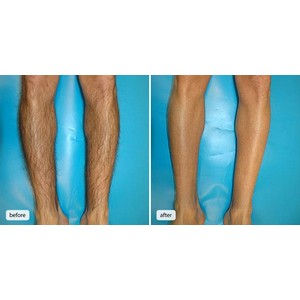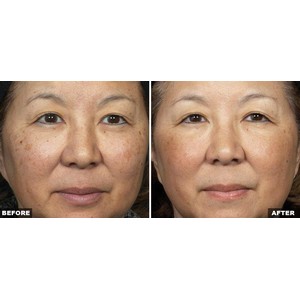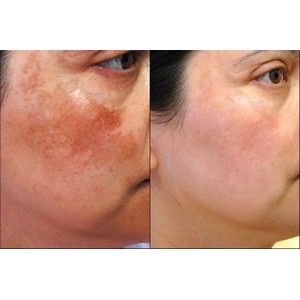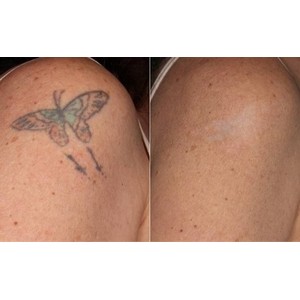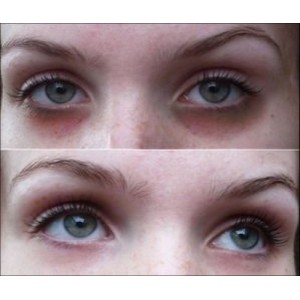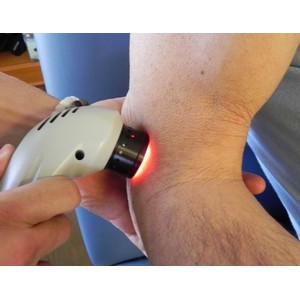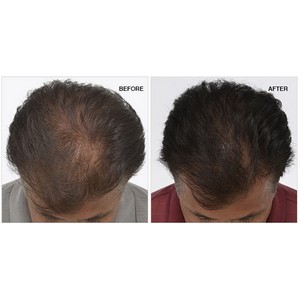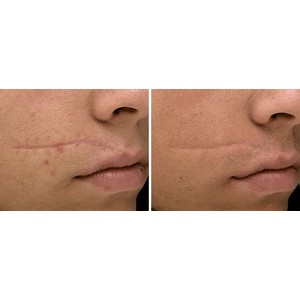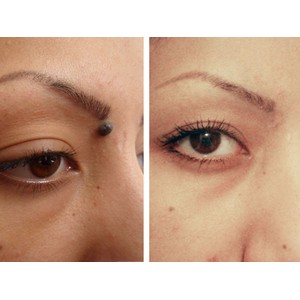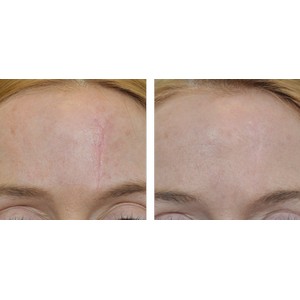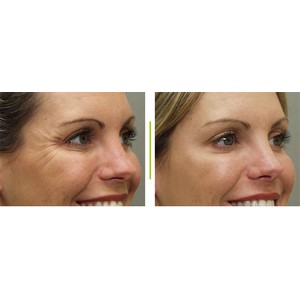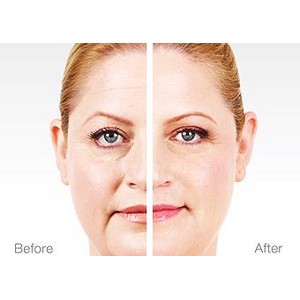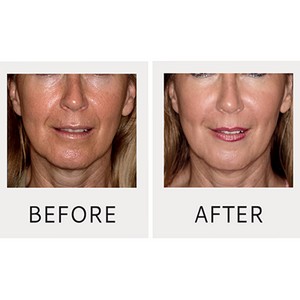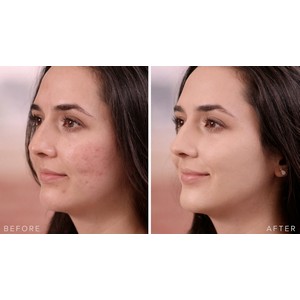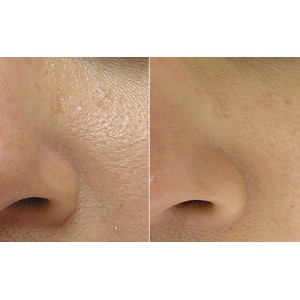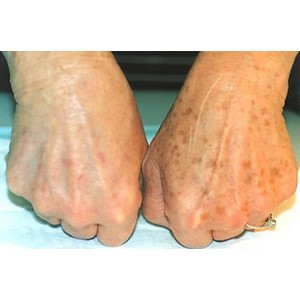Introduction
A year after your FUE hair transplant, you might be curious about the scars. FUE is a gentle way to do transplants, but it still leaves little scars where they took hair. In a year, these scars usually heal a lot. But how they look can change from person to person, depending on how your body heals and how you take care of them.
It’s good to know what to expect and how to look after your scalp for the best healing. Dr. Manas S N is really good at hair transplants and can give you helpful advice and tips on caring for your scars in the long term.
Explore the intriguing world of FUE scars formation during the process!
FUE scars formation during hair transplant process
FUE hair transplant is when doctors move hair from one part of your head to where you need more hair. This can leave small scars because:
- Taking Out Hair: The doctor uses a special tool to take out each hair from the back of your head. This makes tiny round cuts.
- Small Round Scars: Each time a hair is taken out, it leaves a small round scar. These are very tiny, like the size of a pinhead.
- Scars at First: Right after the surgery, these scars look like small red dots. Later, they heal and become less easy to see.
- Less Noticeable Than Old Methods: This way of doing hair transplant doesn’t leave big scars like older methods. It’s better if you like to keep your hair short.
The doctor’s skill is important for making sure these scars are as small as possible.
Worried about FUE scars from hair transplant? Don’t wait – schedule your appointment now for personalized care.
What to expect after 1 year
One year after an FUE (Follicular Unit Extraction) hair transplant, here’s what you can typically expect:
- Hair Growth: By this time, most of the transplanted hair should have grown in. You’ll likely see about 60-80% of the hair growth.
- Fuller Hair: The area where you had thinning or balding should now have a fuller look with the new hair.
- Scar Healing: The tiny scars in the donor area (where hair was taken from) will have healed. They might still be visible if your hair is very short, but they’re usually less noticeable.
- Natural Appearance: The transplanted hair should blend in with your existing hair, giving it a natural look.
- Mature Hair Texture: The new hair might initially have a different texture, but by one year, it should feel more like your normal hair.
Remember, the final results can vary based on individual factors like your health and how you care for your hair. It’s always good to follow up with your surgeon if you have any concerns or questions.
Let’s delve into the next step of scar healing.
The healing process for FUE scars
When you get an FUE hair transplant, it’s important to know how your head heals afterwards.
Here’s a simple guide on what to expect during the healing process:
- Right After Surgery: Small red spots where the hair was taken and put in. It might feel sore.
- First Week: Scabs form on these spots. Don’t pick them.
- After Two Weeks: Scabs fall off on their own.
- Next Few Weeks: Redness and swelling go down.
- Two to Eight Weeks Later: The new hair might fall out, but that’s normal.
- Three to Six Months: New hair starts growing.
- Six to Twelve Months: This new hair gets thicker and better.
- Scars Fade Over Time: Tiny scars where hair was taken get less noticeable, especially if your hair is longer.
Remember, follow your doctor’s advice for the best healing after your surgery.
Curious about the healing process for FUE scars? Take charge of your health and life – contact us today for personalized insights and support.
Factors Affecting FUE Scar Healing
The healing of scars from an FUE (Follicular Unit Extraction) hair transplant can be influenced by several factors:
- Skin Type: People with different skin types heal differently. Some may scar more easily than others.
- Age: Older people might heal slower than younger individuals.
- Post-Op Care: How well you follow the aftercare instructions can affect scar healing. Good care helps in better and faster healing.
- Surgeon’s Skill: The experience and technique of the surgeon play a big role. Better technique can lead to smaller, less noticeable scars.
- Healing Ability: Everyone’s body heals differently. Some people naturally heal with less scarring.
- Infection Prevention: Avoiding infection is crucial. Infections can worsen scarring.
- Tool Size: Smaller tools for extraction might lead to smaller scars.
- Overall Health: General health and lifestyle, like smoking and nutrition, can impact how well and quickly you heal.
- Extraction Density: If too many hairs are taken from a small area, it can lead to more visible scarring.
- Hair Length: Longer hair in the donor area can help hide scars as they heal.
Remember, it’s important to discuss these factors with your surgeon before the procedure to understand how they might affect your scar healing. Explore various treatment options and natural remedies for FUE scars.
Treatment options/natural remedies available for FUE scars
Treating and minimising the appearance of scars from an FUE (Follicular Unit Extraction) hair transplant can be done through several medical treatments and natural remedies. Here’s a list:
Medical Treatments:
- Laser Therapy: Can help reduce scar visibility and improve skin texture.
- Steroid Injections: Used to treat raised scars.
- Microneedling: Stimulates skin healing and can improve the appearance of scars.
- Platelet-Rich Plasma (PRP) Therapy: Promotes healing and hair growth, potentially improving scar appearance.
- Scar Revision Surgery: Involves surgical improvement of the scar, but it’s less common for FUE scars.
Natural Remedies:
- Aloe Vera: Known for its healing properties, it can be applied to the scarred area to promote healing.
- Coconut Oil: Contains fatty acids that can help moisturize the scar and speed up healing.
- Vitamin E Oil: Often used to improve skin health and may help in healing scars.
- Onion Extract: Available in gel form, known for its anti-inflammatory and collagen-regulating properties.
- Essential Oils: Oils like lavender and rosemary may help, but they should be used cautiously and diluted in a carrier oil.
General Care Tips:
- Keep the scarred area protected from the sun, as UV rays can darken scars.
- Maintain a healthy diet and stay hydrated to support skin healing.
- Avoid smoking, as it can impair the healing process.
Exploring treatment options or natural remedies for FUE scars? Take charge of your health and life – contact us today for personalised guidance and support.
Conclusion
After an FUE hair transplant, you might see small scars. How they heal can vary based on your skin type, age, how well you follow care instructions, and your surgeon’s skills. To help these scars look better, you can use medical treatments like laser therapy or natural remedies like aloe vera and coconut oil. It’s important to talk to a doctor before starting any treatment to make sure it’s right for you. These methods can improve the look of scars but may not remove them entirely. Taking good care of your overall health also helps in the healing process.
FAQs
Are FUE scars permanent?
- FUE scars can be permanent, but their visibility may diminish over time.
Are there any risks associated with treating FUE scars after 1 year?
- Risks associated with treating FUE scars after 1 year include potential for further scarring or changes in skin pigmentation.
Is it normal to experience itching or discomfort around FUE scars after 1 year?
- Itching or discomfort around FUE scars after 1 year can be normal as the skin heals and nerves regenerate.
Will my lifestyle or hair care routine affect the visibility of FUE scars after 1 year?
- Lifestyle and hair care routines can influence FUE scar visibility, with proper care potentially minimising their appearance.
Will hair grow over the scar on the scalp?
- Hair can grow over scalp scars, but the density and texture may vary depending on scar tissue and hair growth patterns.

